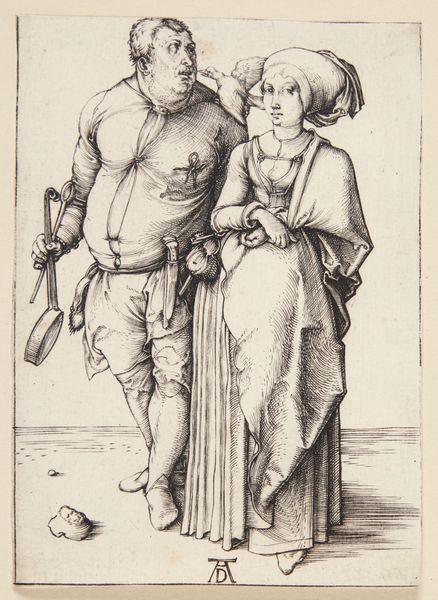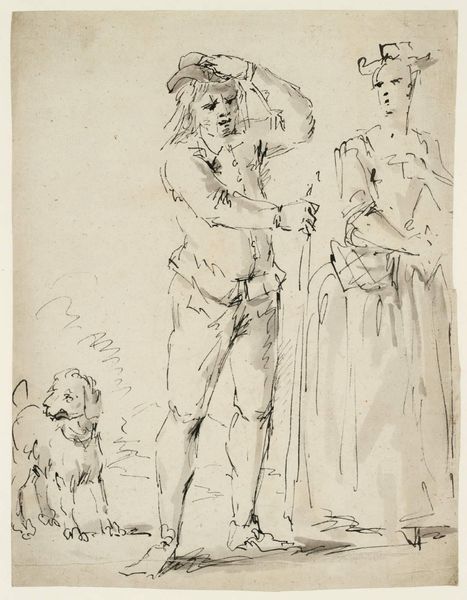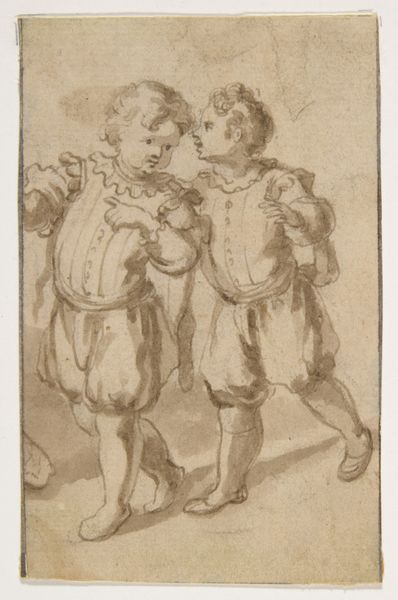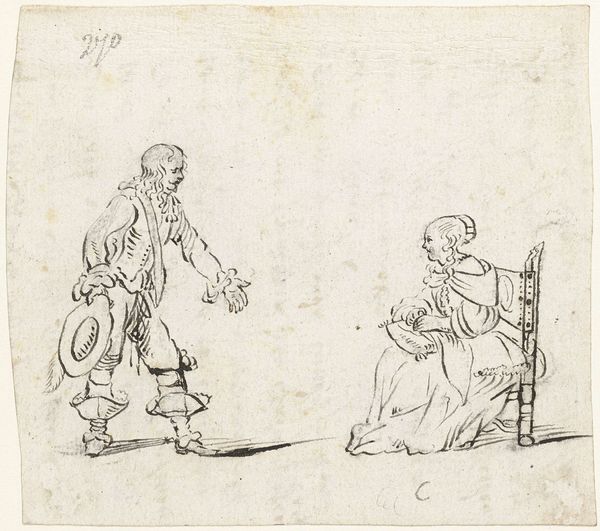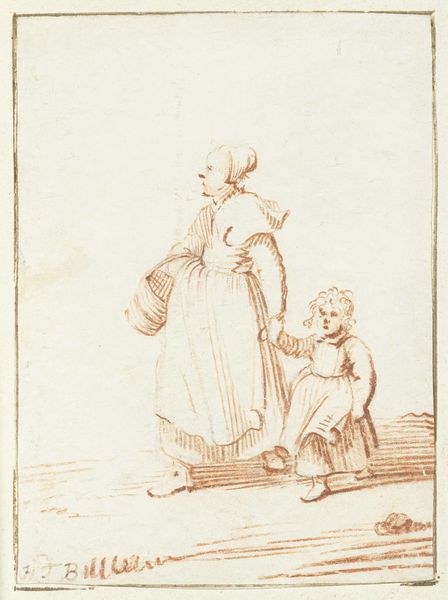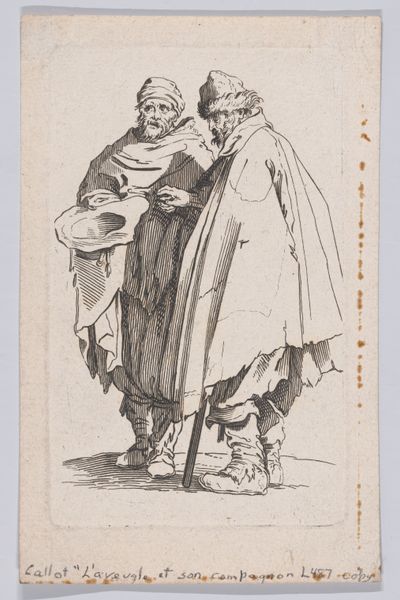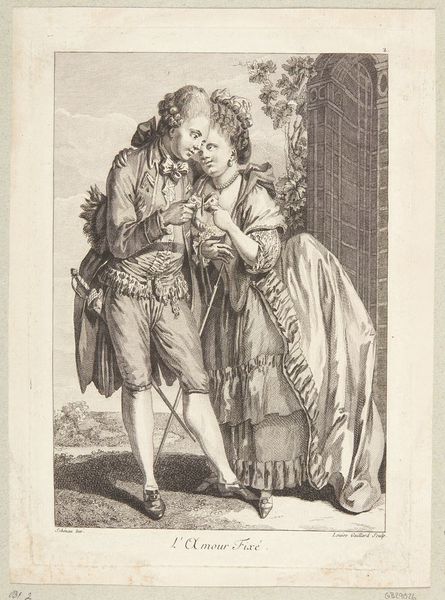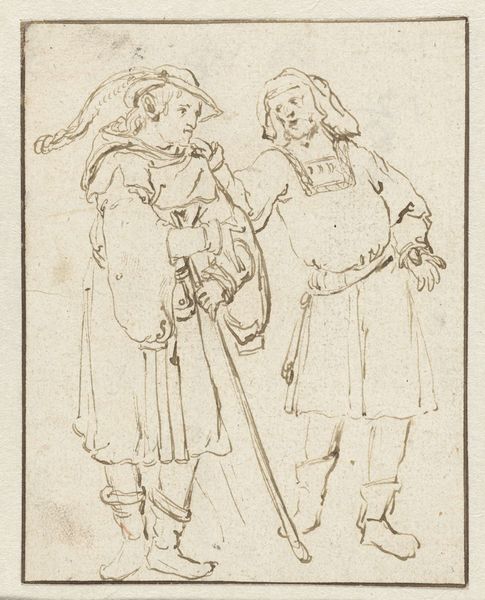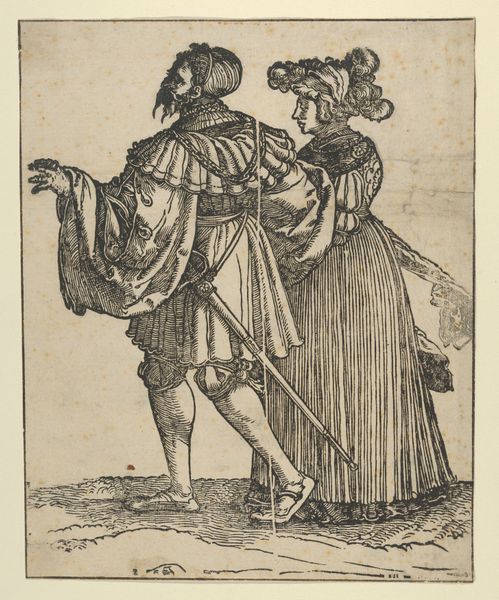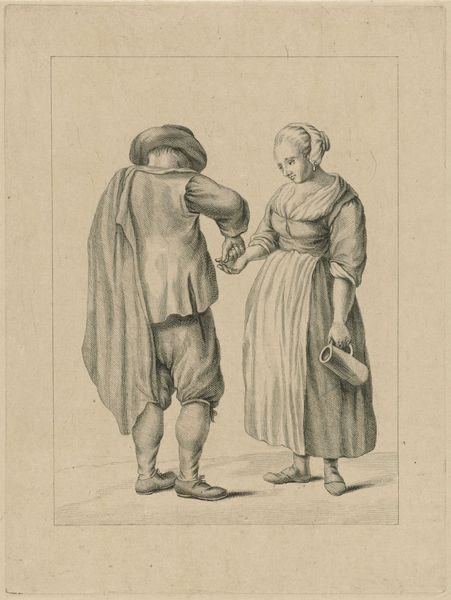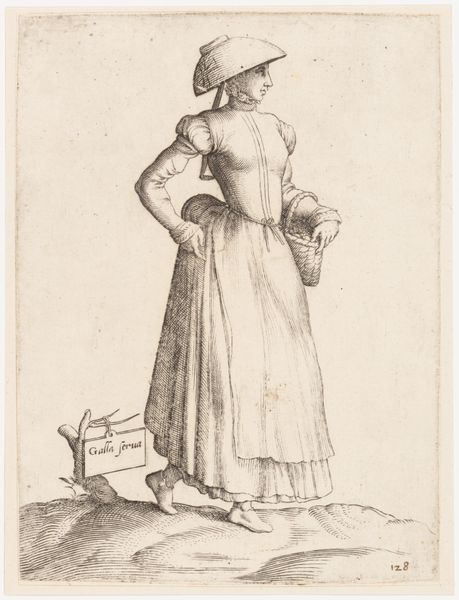
drawing, ink, indian-ink, pen
#
portrait
#
drawing
#
baroque
#
figuration
#
ink
#
indian-ink
#
pen-ink sketch
#
14_17th-century
#
pen
Copyright: Public Domain
Curator: Looking at this delicate drawing by Jacques Callot, "A Cavalier with his Lady," created with pen and India ink, one is immediately struck by the intricate detail despite its modest scale. Editor: Indeed! My first impression is one of understated elegance; the etching technique feels remarkably precise. You almost imagine the clothing swishing with them! What can you tell us about this context? Curator: Callot lived from 1592 to 1635, and he worked extensively with printmaking techniques that were becoming quite popular at the time. This piece, showcasing a fashionably dressed couple, exemplifies how dress functioned as a symbol of social status and aspiration within the context of the baroque era. These figures weren't simply wearing clothes; they were performing a specific role in society. Editor: And if we consider the means of its creation, that etching—that method of production itself—contributes to this performance, does it not? The etching process and then the dissemination of images. We see how reproductive technologies shape art and society simultaneously, with craftsmanship made available to a wider audience through prints, though with limited viewership at the time! The drawing then is one aspect of its journey, material and cultural. Curator: Precisely. Callot used innovative etching techniques to create finer lines, leading to a level of detail previously unseen, thereby democratizing the image-making of elites, even though it's still for the privileged. How do you think such detailed observation of costume would affect the viewership? Editor: For the burgeoning middle classes especially, the availability of such detailed depictions would reinforce existing social structures whilst, for those outside, these might act to provoke or incite different views of court and class, even subversion! The image functions within complex webs of institutional power, reinforcing hierarchies of the day, but does this, always? Curator: That is a powerful reminder of the complexities involved in our observation. Studying "A Cavalier with his Lady" pushes us to remember not only how artwork is made but the societies they live in, from production to consumption. Editor: Callot’s drawing really is a testament to the interplay of socio-historical context, skill, and our ability to extract narratives from lines drawn centuries ago!
Comments
No comments
Be the first to comment and join the conversation on the ultimate creative platform.
